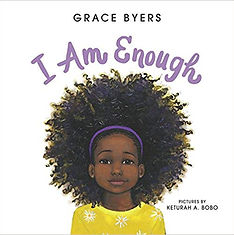
for the public & professionals
Below you will find all kinds of helpful resources (books, film, articles, learning platforms, organizations, etc) on sexual health just for you. Check out the category filter to help you organize your search. Enjoy!
Intimacy Resources






How and Why to Use LGBTQ+ Inclusive Language in Psychology
About 10.1 million Americans, or 4.1% of the country’s population, identify as LGBTQ+, according to the Pew Research Center.Those numbers have been steadily rising. It’s unlikely that more people are being born LGBTQ+; instead, people are coming out in higher numbers as cultural attitudes shift. However, according to the American Psychiatric Association (APA), LGBTQ+ individuals are more likely to grapple with anxiety, depression, gender dysphoria, and other challenges. LGBTQ+ community’s disproportionate levels of mental health issues can often be traced to issues with societal and self-acceptance—and if you look at the cultural climate that the community has long endured, it’s not hard to understand why.
Different Loving
In order to understand unusual sexualities such as dominance and submission, one first has to consider the question ‘What is normal?‘ If the unique function of sex is reproductive—and the only reason men and women should engage in sex is for the purpose of creating a new life—then only heterosexual intercourse is normal. By this standard, many common acts, even contraception, must be considered aberrant. Reproductive relevance was the Victorian standard of normalcy, and even today many of the laws in the United States still abide by that model. But people have always pursued sex for both reproduction and for pleasure and well-being.
The Gender Creative Child: Pathways for Nurturing and Supporting Children Who Live Outside Gender Boxes
In her groundbreaking first book, Gender Born, Gender Made, Dr. Diane Ehrensaft coined the term gender creative to describe children whose unique gender expression or sense of identity is not defined by a checkbox on their birth certificate. Now, with The Gender Creative Child, she returns to guide parents and professionals through the rapidly changing cultural, medical, and legal landscape of gender and identity.
The Sexual Healing Journey: A Guide for Survivors of Sexual Abuse
Survivors of sexual abuse are encouraged to achieve loving and safe sexual lives once again by going through, step-by-step, a most challenging aspect of recovery. Based on Matz's clinical work, interviews, survey results, and workshops, this guide if filled with first-person accounts of survivors and includes groundbreaking exercises and techniques.
An Exceptional Children’s Guide to Touch
This is a one-of-a-kind resource for understanding and celebrating the gender diversity that surrounds us." Dr Tina joins Candice and Katie of Free Sex Podcast for a fun interview where they talk about ‘all things sex’ – sexual shame, masturbation in marriage, transactional sex, who is entitled to what, knowing what you want in the bedroom and many other topics. "Join the creators of Queer: A Graphic History (‘Could totally change the way you think about sex and gender’ VICE) on an illustrated journey of gender exploration.
It’s OK to be Different
Told with Todd Parr's signature wit and wisdom, It's Okay to Be Different cleverly delivers the important messages of acceptance, understanding, and confidence in an accessible, child-friendly format. The book features the bold, bright colors and silly scenes that made Todd a premiere voice for emotional discussions in children's literature. Targeted to young children first beginning to read, this book will inspire kids to celebrate their individuality through acceptance of others and self-confidence--and it's never to early to develop a healthy self-esteem.
A Clinician's Guide to Systemic Sex Therapy
Ever wish you had a 'Cheat Sheet' to help you know what your kid needed at each stage, how to prepare, and how they were going to push your buttons? This is it!! What you'll get in this webinar Learn the chief developmental tasks for 4-7 year olds and 8-12 year olds & specify the typical behaviors of each stage Pinpoint the key affirmations for each stage Clarify the helpful and unhelpful parent behaviors of that stage Identify triggers and tasks to help you parent shamelessly For more information and resources visit Tina's COVID-19 Resources for Parents














